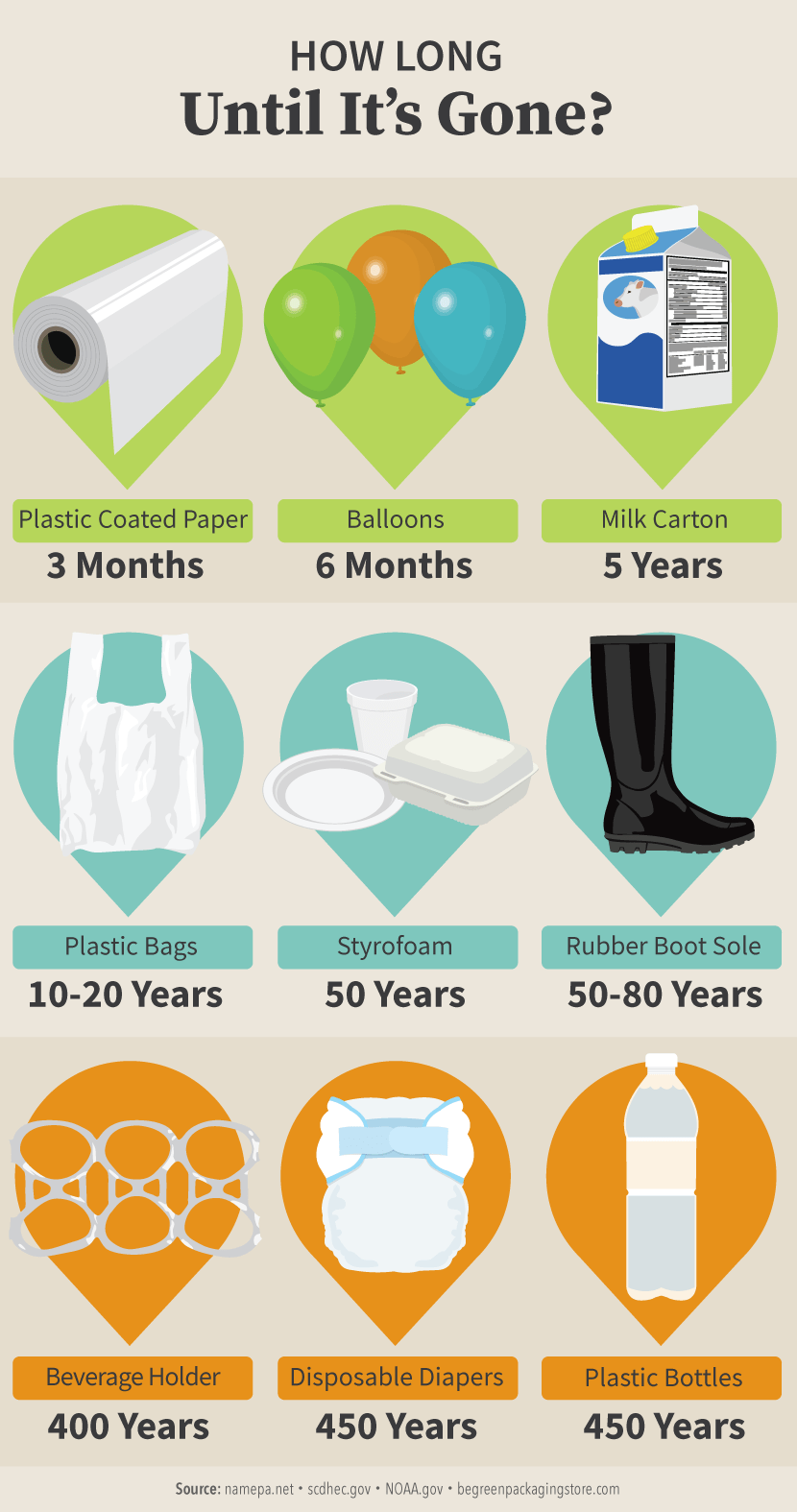
Lowering the amount of waste sent to our landfills can create a healthier environment by reducing greenhouse gasses and making sure less harmful materials end up in our food and water.1. Try to avoid products that take over a year to decompose and recycle when possible. We must take the necessary steps to ensure that we keep our waste at a minimum. Landfills are the single largest source of man-made methane emissions in the U.S. Methane is anywhere from 28-36 times more effective than CO2 at trapping heat in the atmosphere. Organic materials that lack oxygen create Methane, a harmful greenhouse gas. Plastics and glass will get slowly crushed into tiny pieces that will stay in the landfill forever or end up in our water and food sources. Most non-organic materials will never completely break down. The sad truth is, most landfills lack the light, water, and bacterial activity required for the decomposition process to even begin. Materials that are able to decompose need light, water, and oxygen for the microorganisms to be able to help break them down. Plastic bottles make up nearly half of all recyclable materials that end up in landfills and take 450 years to decompose. To see if the program is available in your area check out Recyclops+ provides pickups for hard to recycle items like plastic films. However, all scientists agree it takes “a really, really long time.” alone, more that 60 million plastic bottles are thrown away every day.īecause plastic is a relatively new material, scientists are still studying how each type of plastic can/will decompose. Pollution from plastic bottles is a global problem with most of it ending up in our oceans or breaking down into microplastics that can be found in our food. Plastic bottles can take up to 450 years to decompose.

When exposed to sunlight this type of plastic can become brittle and start to crack. Although these bags never biodegrade, they can photodegrade. Plastic bags are made from a material called polyethylene, a man-made polymer that microorganisms cannot recognize as food. In recent years, people have become more aware of the environmental hazards created by plastic bags. For instance, a plastic coated paper milk carton can take 5 years to decompose but a plastic grocery bag will never decompose. Plastics differ based on chemical composition which can also affect its ability to decompose. See if the program is available in your area. Recyclops+ provides pickups for hard to recycle items like clothing. Next time you think about throwing out your used clothing and shoes, consider donating them to a local thrift store or charity where they can be reused and given a new life. A lot of clothing is made out of many types of materials which has a tremendous effect on how long it takes to decompose.

Wool socks take 1-5 years to decompose while leather and nylon fabrics, like the kind used for sports jerseys, can take as much as 40 years! Polyester clothing is made out of the same materials as single-use water bottles, which means it will never truly decompose. One cotton t-shirt can take as long as 6 months to decompose in a well lit and oxygenated environment.
#DOES GLASS DECOMPOSE FULL#
Fast Fashion contributes to 92 billion tons of clothing being sent to landfills every year, that’s a garbage truck full of clothes being dumped every second.

Fashion waste is a growing problem all over the world.


 0 kommentar(er)
0 kommentar(er)
